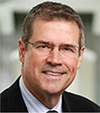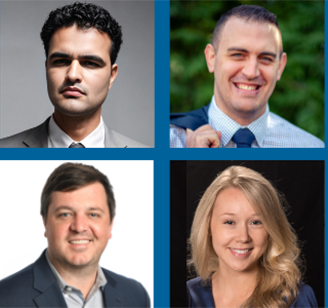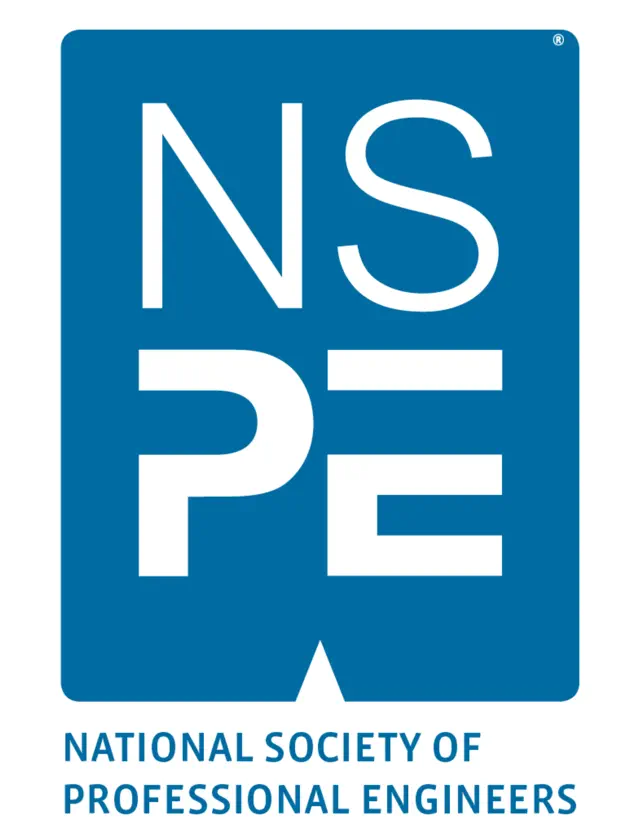May/June 2019
In Focus: Legal Briefing
Managing Great Expectations
BY DANIELLE BOYKIN
Evolution of the standard of care is an issue that design professionals must be aware of as technology advances.
The standard of care touches on the engineer’s duty and is defined as the degree of care that a reasonable individual should have performed in the same or similar circumstances. If design firms aren’t prudent during contract negotiation, they will be vulnerable to client demands for a standard of care that goes beyond what is reasonable, creating conflicts down the road.

JEFFREY COLEMAN, P.E., ESQ.
NSPE members Jeffrey Coleman, P.E., Esq., and Coy Veach, P.E., offer their expertise on how managing client expectations and implementing sound quality control processes go hand in hand with maintaining the right standard of care level.
Often the standard of care changes when there’s a disastrous engineering event. Jeffery Coleman points to the wind-induced collapse of the Tacoma Narrows Bridge in 1940 as one of those moments. Anyone who has ever seen the film footage of the extreme twisting of the bridge before its collapse is hardly unlikely to forget it—especially civil engineers, he says. “That bridge was designed to what was then the standard of care and in other words, other engineers would have done the same under similar circumstances, says the principal partner of the Coleman Law Firm in Minneapolis, Minnesota. This also means that the engineer wasn’t negligent under the law.” Yet, the collapse had a profound and lasting effect on engineering design.
Engineers must maintain sound engineering practices and design with safety in mind to decrease liability risks, but there is no standard-of-care crystal ball. Every time a new technology or design practice comes on the scene, Coleman is commonly peppered with the question: What is the standard of care going to be now? “I tell people to ask me in 10 to 15 years because that’s how long it takes for cases to get through the court systems to offer solid guidance,” he says. For example, Coleman saw claims increase when LEED certification of buildings became popular, but clients didn’t get the energy-efficiency results that met their expectations.
Every one of Coleman’s clients wants to stay out of court, but that’s not always possible. When a claim results in a lawsuit, expert testimony is required to establish the standard of care. This presents some frustration, says Coleman, because experts on each side will disagree on the standard of care. “For instance, let’s say there’s a submittal where some small portion of that submittal is incorrect. The expert representing the design professional will say the contract says we only check for general conformance. The expert on the other side will say the standard of care would have been that such an important detail that it should have been caught in the shop drawings.”
The standard of care issue that Coleman continues to see early in the contract negotiation process is one in which a client owner might want a provision stating that the engineer will perform at the highest standard of the profession or try to define a standard that’s inconsistent with the typical standard of care. “I’ve advised my AEC clients that it’s as important to define what’s not in the scope of work as it is to define what is in the scope of work,” says the former member of the Minnesota Board of Architecture, Engineering, Land Surveying, Landscape, Architecture, Geoscience, and Interior Design.

COY VEACH, P.E.
Higher Standard
During his tenure of more than 40 years at the Fort Worth, Texas-based Freese and Nichols Inc., Coy Veach, P.E., has gained more than just a little experience in negotiating and reviewing project construction documents and contracts. He’s seen the standard of care evolve as engineering practice has improved and software and technology have advanced. “The standard has gotten higher because the industry’s capabilities have gotten higher, and this requires a firm to evolve along with the standard of care,” says the vice president and senior consultant of construction management and program management practices.
Veach says there are several ways that Freese and Nichols has managed to reduce liability risks as the firm has expanded throughout the US. First, firm leaders are selective about the types of projects they pursue, avoiding risky markets altogether. They call it a “go or no-go” review. “Too often, engineering firms won’t recognize that there’s certain playgrounds they should avoid,” says Veach, a former chair of the Engineers Joint Contract Documents Committee.
When the firm decides to take on a project, the risk management department reviews all professional services agreements to make sure the firm isn’t taking on duties or a standard of care that could lead to problems. “There are clients that have unrealistic expectations. We recognize that going in,” he says. “We don’t want language in the contract that provides a guarantee or will provide services at a higher level than the standard of care.”
Commitment to Quality
Some clients may want to push project managers to save money by cutting corners, which can hurt project quality. Acquiescing to such demands will only cause problems during the project—potentially affecting the standard of care and jeopardizing a firm’s good business reputation. “If clients want to nickel and dime consultants, they’re not going to get the best people for the project. We had to make a business decision that we just can’t allow that,” says Veach, who played a significant role in developing the firm’s quality review program.
Freese and Nichols has built its reputation on the quality of its professional services and is a recipient of the Malcolm Baldridge National Quality award. The award was created by Congress in 1987 to recognize organizations with exemplary management systems, including continuous improvement in the delivery of products and services, efficient and effective operations, and responsiveness to customers and employees. Freese and Nichols is the first AEC firm to receive the award. After receiving the award, Freese and Nichols mentored other organizations, cities, and school districts to help them raise their standards of operations.
Over the years, firm leaders have learned that hiring the right talent and investing in employees through mentoring and coaching are some of the best ways to maintain quality. Freese & Nichols puts these tenets into practice through strategic planning and providing access to professional development and leadership training through an in-house university.
To maintain quality, the firms also expanded the career path options for engineers and technicians. A “three-legged stool” approach was created to allow employees to determine if they wanted to work in management, marketing, or stay focused solely on engineering as they grew with the company (with the option to cross over). “We had to go back in to create a career path that recognizes people for their technical expertise and compensate them adequately for that expertise,” says Veach. “By making people always feel like they had to be a manager or marketer to make more money, we found that was counterproductive.”
Learning from missteps and infusing accountability into the firm’s culture are also critical to maintaining quality. Veach looks to one of his favorite sayings as an example of the firm’s philosophy on these lessons: A wise man learns from his mistakes. But a truly wise man learns from the mistakes of other people so he doesn’t make the same mistakes.
Managing Relationships, Expectations
Properly managing client expectations and clearly communicating these expectations should be a top priority for AEC firms. Until just a few years ago, says Coleman, standard industry contracts were completely silent on the standard of care. The latest contract documents contain standard of care language that helps design professionals to better manage client demands.
When there’s strong competition for project bids, AEC firms must avoid the pressures to offer too much leeway in response to a client’s unrealistic expectations. Because the business environment is currently good for AEC firms and everyone is busy, that’s less of an issue, says Coleman. “Architects and engineers are able to push back more in this economy because there’s plenty of work. When the economy was tough, it was much more difficult to walk away from a contract due to a provision.”
He adds, “I’ve also found that the standard of care provision can be negotiated and tied to reasonable language. I don’t know that I’ve seen a client lose a project over standard of care language. I have over indemnity language.”
Client education is critical to maintaining a reasonable standard of care. “Some clients may want to treat us like a product and may expect everything to be like it came off an assembly line,” says Veach. “We don’t do the same project over and over. They’re all unique.”
A part of client education is establishing a good rapport to drive home the message that the standard of care is the bar, says Veach. It’s unrealistic to strive for perfection. “This requires communicating the firm’s true capabilities and limitations and openly sharing this information with clients,” he says. “This doesn’t mean that we have to sit back and be passive and not take pride in our innovations. It’s just that we have to be careful about painting unrealistic expectations for the people that we serve.”


 Volunteering at NSPE is a great opportunity to grow your professional network and connect with other leaders in the field.
Volunteering at NSPE is a great opportunity to grow your professional network and connect with other leaders in the field. The National Society of Professional Engineers (NSPE) encourages you to explore the resources to cast your vote on election day:
The National Society of Professional Engineers (NSPE) encourages you to explore the resources to cast your vote on election day:
